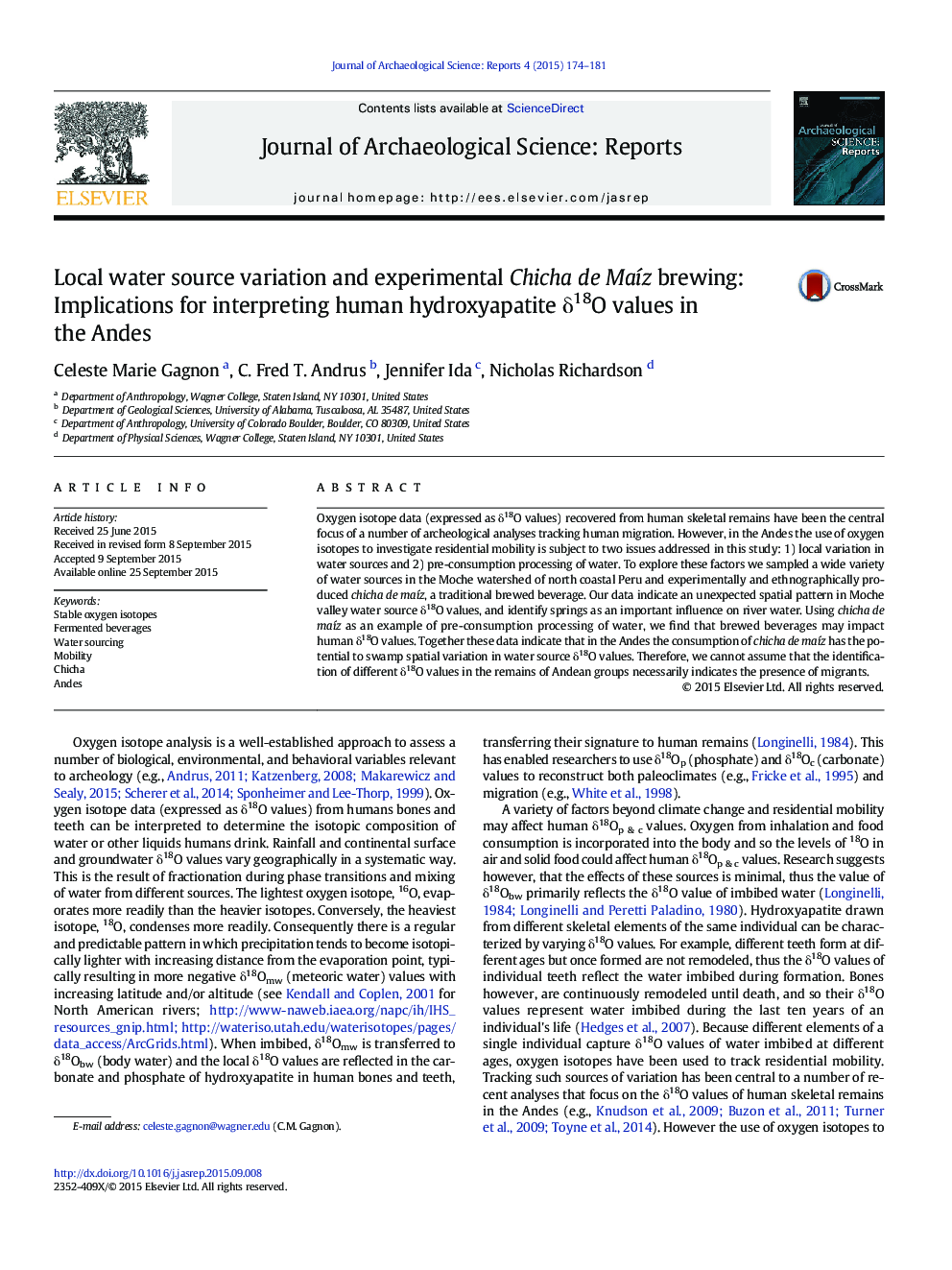| Article ID | Journal | Published Year | Pages | File Type |
|---|---|---|---|---|
| 7446008 | Journal of Archaeological Science: Reports | 2015 | 8 Pages |
Abstract
Oxygen isotope data (expressed as δ18O values) recovered from human skeletal remains have been the central focus of a number of archeological analyses tracking human migration. However, in the Andes the use of oxygen isotopes to investigate residential mobility is subject to two issues addressed in this study: 1) local variation in water sources and 2) pre-consumption processing of water. To explore these factors we sampled a wide variety of water sources in the Moche watershed of north coastal Peru and experimentally and ethnographically produced chicha de maÃz, a traditional brewed beverage. Our data indicate an unexpected spatial pattern in Moche valley water source δ18O values, and identify springs as an important influence on river water. Using chicha de maÃz as an example of pre-consumption processing of water, we find that brewed beverages may impact human δ18O values. Together these data indicate that in the Andes the consumption of chicha de maÃz has the potential to swamp spatial variation in water source δ18O values. Therefore, we cannot assume that the identification of different δ18O values in the remains of Andean groups necessarily indicates the presence of migrants.
Related Topics
Social Sciences and Humanities
Arts and Humanities
History
Authors
Celeste Marie Gagnon, C. Fred T. Andrus, Jennifer Ida, Nicholas Richardson,
